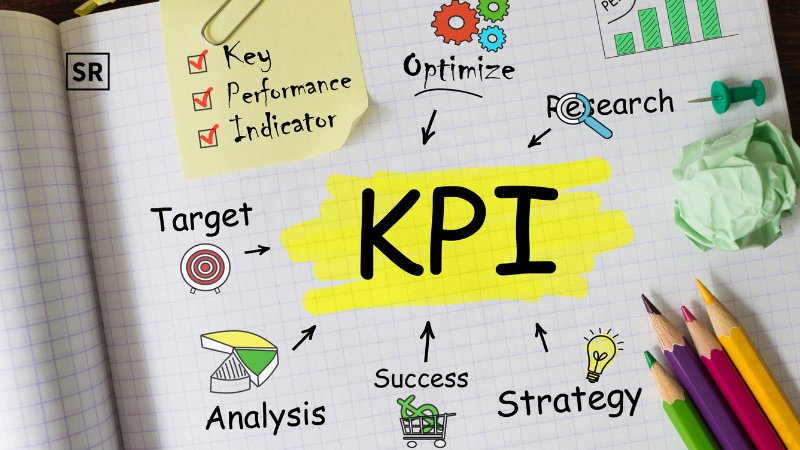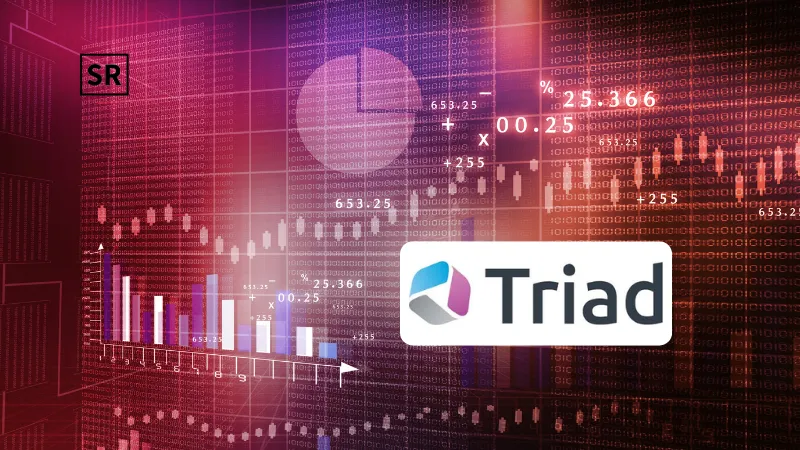
Key Performance Indicators (KPIs) are numbers or data points that help businesses see how well they’re doing. They show if a company, team or person is meeting important goals. For example, a business might track things like sales, customer satisfaction or website visits to understand performance. KPIs are useful because they focus attention on what really matters and help leaders make smart decisions.
Different departments use different KPIs for example, sales might look at revenue, while HR might track employee satisfaction. This simple guide includes over 100 examples of KPIs used in areas like sales, marketing, finance, customer service, HR, IT, and more. It also covers general KPIs that apply to all teams, such as productivity, work quality, and teamwork. KPIs are powerful tools that help everyone stay on track and keep improving.
Department-based KPI examples for evaluating success
Department-based Key Performance Indicators (KPIs) are specific metrics used to measure success in different areas of a business. For example, Sales might track revenue growth or number of deals closed, Marketing could measure lead conversion rates or website traffic and Customer Support may focus on response time or customer satisfaction. Each department uses KPIs that match its goals, helping the organization understand performance and make better decisions.
Sales KPI examples
Sales KPIs are numbers or data that help track how well the sales team is doing. They show how effective the team is at bringing in new customers, closing deals and growing the business. These KPIs focus on things like sales growth, how many leads turn into customers and how much it costs to get a new customer. Here are some common sales KPIs :
RECOMMENDED FOR YOU

5StarsStocks.com Review: What You Need to Know About This Stock Trading Platform
Kailee Rainse
Aug 7, 2025
- Appointments booked: How many sales meetings are scheduled shows team activity and customer interest
- Sales presentations given: Number of times the team presents to potential clients shows how active and engaged the team
- Sales made: Number of successful sales directly affects revenue
- Average sale value: The average amount of money made per sale helps understand pricing and product value
- SQL to sales conversion: How many qualified leads turn into real sales shows lead quality and sales skill
- Presentation to sales conversion: How many presentations lead to actual sales measures effectiveness of presentations
- Cost of customer acquisition: How much it costs to get a new customer affects profit
- Sales pipeline: Total value of all possible future sales helps forecast upcoming revenue
- Sales vs. last year: Compares current sales to last year’s shows growth or decline
- Customer orders: Number of orders placed shows demand
- Upsells: When customers buy more expensive or additional products shows success in boosting sales
Marketing KPI examples
Marketing KPIs (Key Performance Indicators) are numbers that show how well your marketing is doing. They help you see if your ads, campaigns or content are helping people learn about your brand, become interested in your products and take action. These KPIs make it easier to tell what’s working and what needs improvement. Here are some simple examples of common marketing KPIs:
- Total leads: The number of people who show interest in your business shows how far your marketing is reaching
- Marketing Qualified Leads (MQLs): Leads that are more likely to become customers shows how well your targeting is working
- Sales Qualified Leads (SQLs): Leads that the sales team approves shows the quality of your leads
- Cost per SQL: How much you spend to get a high-quality lead helps measure efficiency
- Sales by lead source: How much money you make from each marketing channel helps find which ones work best
- Click-through rate (CTR): How many people click your ads or links shows how engaging your content is
- Cost per conversion: How much it costs to turn a lead into a customer measures return on investment
- Total impressions: How many times your ad or content is seen shows how many people you’re reaching
- New subscribers: How many people sign up for your service or newsletter shows audience growth
- Website visits: Number of people visiting your website shows your online visibility
- Bounce rate: The number of visitors who leave after one page tells you if your content is relevant
- Page views: Total views of your website pages shows how engaged visitors
Finance KPI examples
Finance KPIs are numbers that help track how healthy a company is financially. They show how much money is being made, how well the company manages its cash and whether it’s growing in a smart and sustainable way.
Here are some common and simple finance KPIs:
- Gross profit margin: Shows how much money is left after paying for the product or service costs — helps measure profitability
- Net profit margin: Shows how much money is left after all expenses — a good sign of overall financial success
- Accounts receivable days: How long it takes to get paid by customers — affects cash flow
- Monthly recurring revenue: How much money comes in every month from subscriptions or repeat sales — shows steady income
- Annual recurring revenue: The yearly total from regular customers — a sign of long-term financial health
- Customer lifetime value: The total money expected from one customer over time — shows long-term profit potential
- Average subscription days per customer: How long customers stay subscribed — helps measure loyalty
- Cash balance: How much cash the company has right now — shows available funds
- Cash burn rate: How fast the company is spending its money — helps track spending habits
- Cash runway: How long the company can keep running with the money it has — important for planning ahead
- Revenue per employee: How much money each employee helps generate — shows team productivity
- Revenue growth: Tracks whether sales are increasing — a key sign of business growth
Operations KPIs examples
Operations KPIs are numbers that show how well a company’s day-to-day work is running. They focus on things like how efficient production is, how smooth processes are, how well the supply chain works and how costs are managed. These help make sure the company’s operations support its overall success.
Some common operations KPIs are:
- Customer complaints: How many complaints customers send — shows how happy customers are and if there are product or service problems
- Support tickets: Number of help requests — shows how well the company solves issues
- Average response time: How quickly the company answers questions — measures customer service speed
- Deliveries on full and on-time (DIFOT): Percentage of orders delivered completely and on time — shows supply chain reliability
- Return rate: How many products are sent back — indicates product quality and satisfaction
- Cost of inventory on hand: Value of products in stock — affects money flow and storage costs
- Inventory turnover: How often stock is sold and replaced — shows how well inventory is managed and sales performance
- Labor costs: Money spent on paying employees — affects profits
- Customer satisfaction: How happy customers are — important for keeping customers and good reputation
- Lost customers: Number of customers who stop buying — shows market position and loyalty
- Customer retention: How well the company keeps customers over time — key for steady income
- Customer churn: Rate of customers leaving — impacts long-term revenue and market strength
Project management KPI examples
Project management KPIs are numbers that help track how well a project is going. They focus on things like staying on schedule, keeping within budget, using resources well and keeping everyone involved happy. These KPIs help make sure projects finish on time, don’t go over budget and meet their goals.
Some common project management KPIs are:
- Actual cost of work performed (ACWP): How much money has been spent on the work done so far — shows if the project is sticking to the budget
- Cost of managing processes: Money spent on managing the project — affects overall profit
- Cost performance index (CPI): Measures how well the project controls costs — shows budget efficiency
- Cost variance (CV): Difference between planned budget and actual costs — helps track financial control
- Budgeted cost of work performed (BCWP): Budgeted cost for the work completed — shows how accurate the planning is
- Missed milestones: Number of important deadlines missed — shows project progress and management quality
- Overdue project tasks: Tasks that are late — indicates how well the schedule is followed
- Planned vs. actual work hours: Comparing hours planned with hours actually worked — shows if the project plan is realistic
- Budgeted cost of work scheduled (BCWS): Budget for work planned — helps with future financial planning
- Projects canceled: Number of projects stopped before completion — affects resource use and planning
- Projects completed on time: Projects finished by the deadline — important for client happiness and efficiency
- Resource utilization: How well project resources (people, tools) are used — affects cost and productivity
- Return on investment (ROI): Money gained from the project compared to what was spent — shows project success
- Schedule performance index (SPI): Measures how well the project keeps to its schedule — shows time management
- Schedule variance (SV): Difference between planned and actual work done — tracks if the project is on time
- Tasks complete: Number of tasks finished — shows progress and team productivity
Department-agnostic employee key performance indicators
Department-agnostic employee KPIs are simple ways to check how well any employee is doing, no matter their job. They look at important things like how productive someone is, the quality of their work, and how well they work with others. Using these KPIs helps companies fairly measure and improve everyone’s work, keep performance steady across teams, and reach their business goals.
- Productivity: How much work an employee completes in a set time
- Quality of work: How accurate and error-free their work is
- Attendance and punctuality: How often they show up on time and ready to work
- Collaboration: How well they work with others and contribute to team goals
- Communication: Clarity and effectiveness in sharing information with coworkers and supervisors
- Problem-solving: Ability to handle challenges and find solutions quickly
- Adherence to deadlines: Completing tasks on or before the due date
- Learning and development: Effort put into improving skills and knowledge
- Customer or client feedback: How well the employee meets the needs of internal or external customers
- Initiative: Willingness to take on new tasks or go beyond basic job duties
Conclusion
Key Performance Indicators (KPIs) are important tools that help organizations see how well they are reaching their goals. By choosing the right KPIs, businesses can check their progress, find ways to improve, and make smart decisions to do better. KPIs help teams and employees work toward the company’s goals, keeping everyone responsible and focused. When used the right way, KPIs help the organization grow and succeed, making them a key part of any business plan.


 Follow us
Follow us Follow us
Follow us













